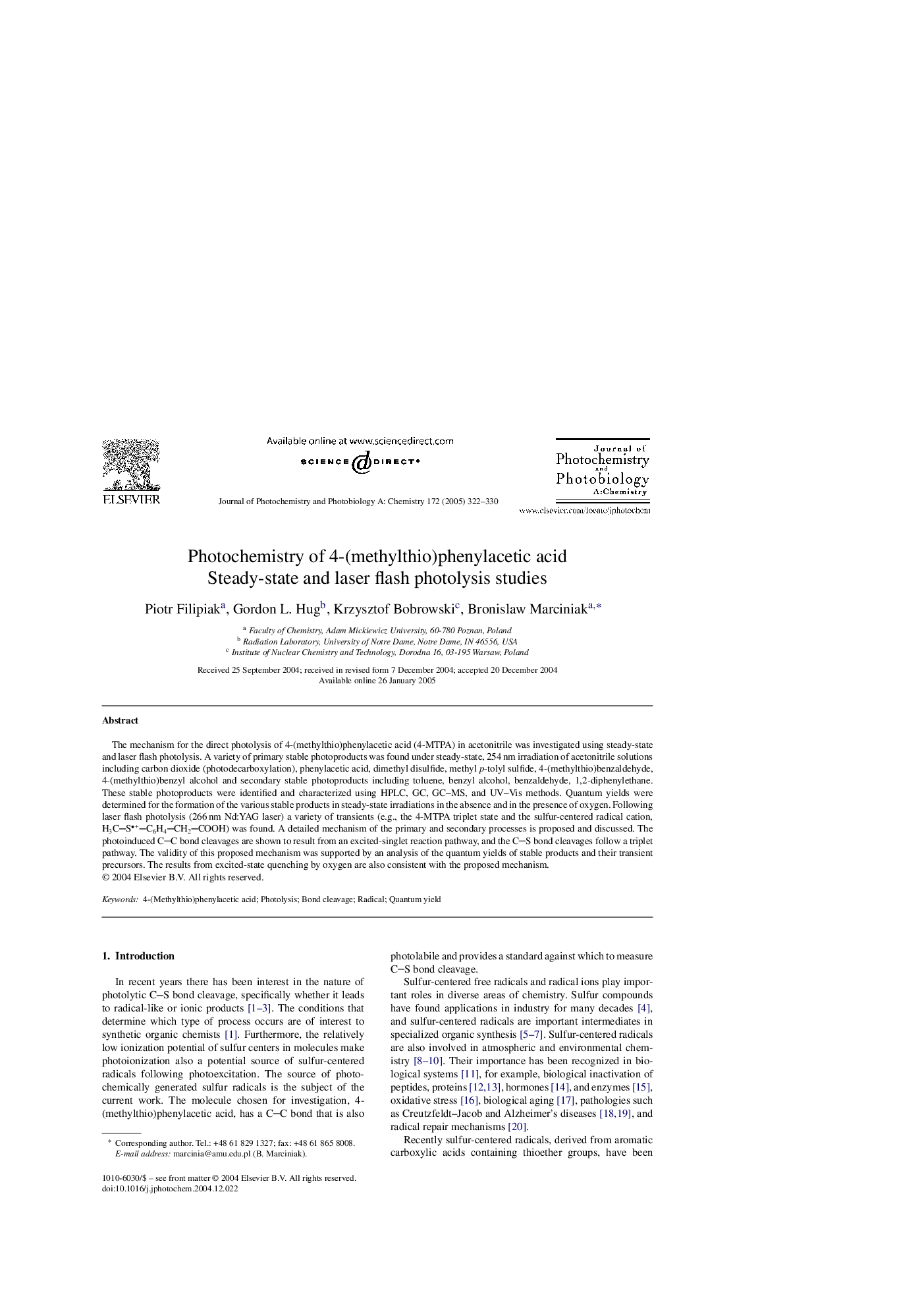| Article ID | Journal | Published Year | Pages | File Type |
|---|---|---|---|---|
| 9605615 | Journal of Photochemistry and Photobiology A: Chemistry | 2005 | 9 Pages |
Abstract
The mechanism for the direct photolysis of 4-(methylthio)phenylacetic acid (4-MTPA) in acetonitrile was investigated using steady-state and laser flash photolysis. A variety of primary stable photoproducts was found under steady-state, 254Â nm irradiation of acetonitrile solutions including carbon dioxide (photodecarboxylation), phenylacetic acid, dimethyl disulfide, methyl p-tolyl sulfide, 4-(methylthio)benzaldehyde, 4-(methylthio)benzyl alcohol and secondary stable photoproducts including toluene, benzyl alcohol, benzaldehyde, 1,2-diphenylethane. These stable photoproducts were identified and characterized using HPLC, GC, GC-MS, and UV-Vis methods. Quantum yields were determined for the formation of the various stable products in steady-state irradiations in the absence and in the presence of oxygen. Following laser flash photolysis (266Â nm Nd:YAG laser) a variety of transients (e.g., the 4-MTPA triplet state and the sulfur-centered radical cation, H3CS+C6H4CH2COOH) was found. A detailed mechanism of the primary and secondary processes is proposed and discussed. The photoinduced CC bond cleavages are shown to result from an excited-singlet reaction pathway, and the CS bond cleavages follow a triplet pathway. The validity of this proposed mechanism was supported by an analysis of the quantum yields of stable products and their transient precursors. The results from excited-state quenching by oxygen are also consistent with the proposed mechanism.
Related Topics
Physical Sciences and Engineering
Chemical Engineering
Bioengineering
Authors
Piotr Filipiak, Gordon L. Hug, Krzysztof Bobrowski, Bronislaw Marciniak,
